- HOME >
- New Arrival at HOJO Online Shop
Pre-Booking of Da Xue Shan Wild Tea and White Tea Mao-Cha 2019
- [2019.05.29] Posted By Akira Hojo
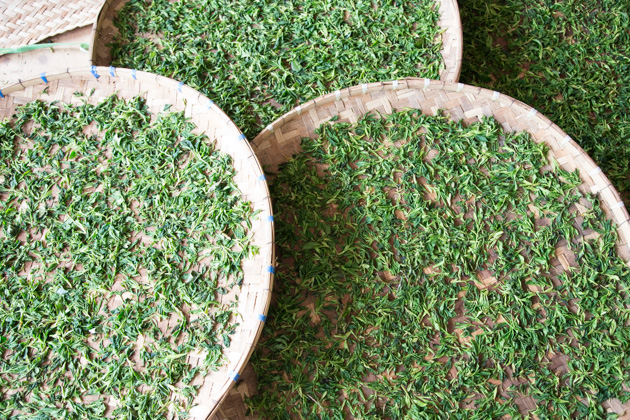
We open the pre-booking of Da Xue Shan Wild Raw Pu-erh Tea and Wild White tea in loose form (mao cha). This year we have very limited stock of loose tea. We will close the booking once the quantity of order reaches our quota. Tea is arriving soon in Japan. So, we should be able to deliver the tea within 1-2weeks. In Malaysia, tea is ready.
Very rare and limited supply of genuine wild tea
The total area of Yunnan province is 3,940,000 square km and it is even bigger than the size of Japan. Out of its large area, 90% consists of mountains. The mountain in Yunnan is very rich in many natural resources. The wild tea is one of them. Since long ago, the villagers used to go to the mountain in spring to collect wild tea leaves and process into dry tea leaf. They drink it as tea, and sometimes use as medicine.
The wild tea refers to the native plant naturally grown in the mountain; it’s not planted by human. Certainly, it is different from those old tea trees or so-called ancient tea trees that are planted by human very long time ago. It is also different from the bio-dynamic or feral garden.
Our wild tea belongs to the species called Camellia taliensis, it is the very closely related species of Camellia sinensis.
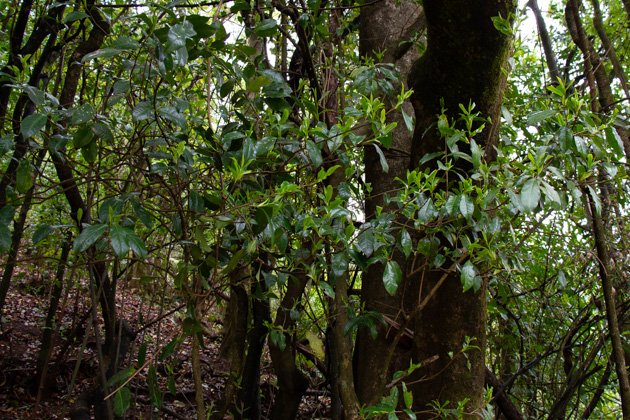
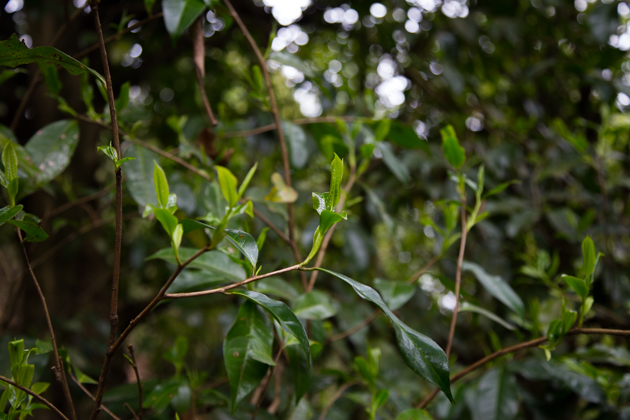
In recent year, the wild tea is getting very popular in Yunnan. Hence, there are a number of Camellia taliensis planted in tea garden. The local people call Wild tea as Shancha (山茶), which means mountain tea. Confusingly, the locals also call Camellia taliensis as Shancha even if they planted it in “tea garden”. We noticed that the local people are not clearly distinguishing between the genuine wild tea found in the deep mountain and human-planted Camellia taliensis. Therefore, it is essential for us to directly access to the source of real wild tea trees and follow up the entire tea making process.
In past years, we have been continuously staying in the core tea production area in every spring, thus we are very familiar with the characteristics of real wild tea, and we have built up firm collaboration with locals. As such, we can ensure the real wild tea is collected and processed rightfully, and not being switched to human-planted wild tea obtained from ordinary tea garden.
We are particularly interested in the real wild tea found in deep mountain. It’s usually found in far remote location. In fact, if you compare the taste side by side, the difference between the real wild tea and the garden Shancha is very distinctive. The real wild tea gives very clean flavour and clear drinking sensation, with extremely smooth and long-lasting aftertaste, while the garden Shancha gives light and shallow aftertaste, and generally its flavour and taste is not very clean. It is like comparing the taste between farmed mushroom and wild mushroom, or farmed herbs with wild herbs.
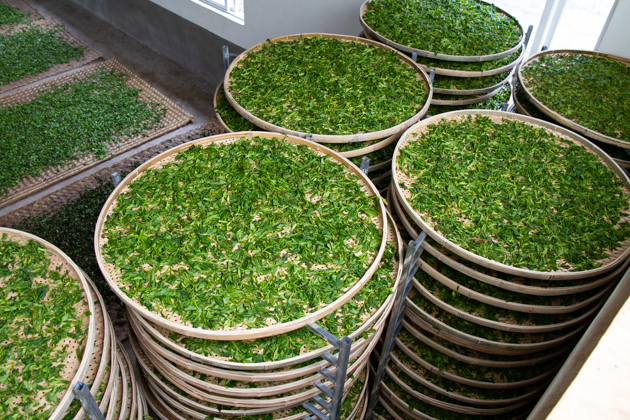
Our Wild Tea is not bitter at all
Many people are afraid that wild tea may taste bitter. However, our Da Xue Shan wild tea is not bitter at all. Instead, it gives sweet taste and very refreshing flavour like flowers, fresh herbs or grapes. The wild tea of Camellia taliensis generally gives very appealing flavour. So those who likes flower tea may like this tea too.
In fact, there are some variety of Camellia taliensis gives very bitter taste like certain medicines. In particular, the wild tea from Ai Lao Shan tends to be quite bitter. Nevertheless, our Da Xue Shan wild tea has no bitterness.
Cold water brewing
I usually brew wild tea using boiling hot water. Interestingly, it gives very delicious taste if you brew it in cold water too. My friend shared this brewing method to me. Initially, I was a little sceptical about cold water brewing of wild tea. However, I was pleasantly surprized by the outcome. It gives completely different cup characteristic from hot water brewing method, and it’s wonderful! I suggest you to give it a try.
Usually I steep 5g of tea in 1 litre of water for half a day. If you remove the tea leaf and keep it in a fridge, it lasts for a few days. The flavour and taste are better if you use the water that has been boiled once and cooled down.
Functional effect of Wild Tea taught by the villagers
The people live on the hoot of mountain told us that this tea works well for constipation. My elder son tends to have this problem. So, I used to give him Da Xue Shan wild tea and it seems really works. Hence, I am starting to believe it really helps to ease constipation. The wild tea is extremely rich in natural mineral content. It improves blood circulation and keeps our body warm. It is good for those who have poorer blood circulation.
Loose tea and Cake
We processed the wild tea into white tea and raw pu-erh tea. Beside the loose tea (mao cha), we also compressed some quantity into tea cake. The characteristic of tea cake is quite different from the mao cha. Prior to the compression of tea cake, the mao cha is steamed to soften the tea leaf. Thus, the tea leaf is moistened and it promotes further fermentation of white tea, or in the case of raw pu-erh tea, it promotes further maturation. After the compression, usually it takes a few days to dry the cake. So, the floral flavour of mao cha is changing to fruitier note after compression. For me, it is hard to choose which one is my favourite because both mao cha and tea cake has its unique characteristic. I love to enjoy the refreshing characteristic of mao cha as it often reminds me of mountain breeze in spring, and I love to enjoy the matured characteristic of tea cake after keeping it for some time too.
Da Xue Shan Wild White Tea 2019
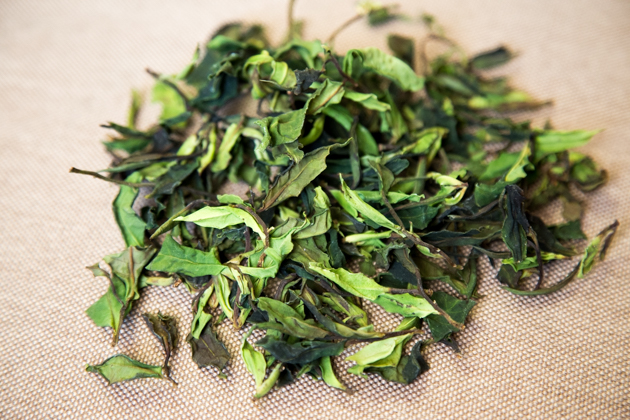
In making white tea, we conducted withering process for a few days in order to enhance its natural floral flavour. The fresh tea gives green grassy flavour, and after some time, it will change to sweet floral note. And if you manage to keep the bag of tea unopened for a few years, it will develop strikingly sweet flavour like raw honey. In our tea warehouse in Malaysia, thanks to the tropical weather, one year is good enough to develop sweet honey flavour. This year, when I brewed the 2018 Da Xue Shan Wild White tea and wild tea at my tea manufacturer’s place, both of us were impressed by the extraordinarily sweet honey flavour of the teas he produced last year. We kept teas for one year, and the maturation of teas seems very ideal.
Pre-Booking of Da Xue Shan Wild White Tea
If you are interested to book this tea, please reply us an e-mail, Facebook message or contact our outlet at The Gardens Mall, Kuala Lumpur. As usual, you will get one more set for free if you get 5 sets. This scheme is applied for both 200g and 600g.
The price indicated is excluding the shipping fee. If you wish us to ship directly to your home address, the shipping fee will be added later. It is advisable to pick it up at our shop and try some new teas of 2019 at the same time.
200g (100g x 2) RM240
600g (100g x 6) RM690
If you get 5 sets, you will get one more set for free.
For oversea customers who is not residing in Malaysia, please visit the following website.
https://hojotea.com/en/posts-215/
Da Xue Shan Wild Raw Pu-erh Tea 2019

Generally, the flavour of ordinary raw pu-erh tea is quite delicate when it is still fresh. In contrast, the wild raw pu-erh tea gives very distinctive floral and fruity flavour. So, I often recommend this tea for beginners to try.
Its flavour reminds me of grapes and some natural wild herbs. This tea gives very strong body as well as super long-lasting aftertaste. Needless to say, it is very delicious once it is aged for years. Just like the wild white tea, it develops sweet honey flavour when it is aged. After further aging, it develops sweet fruity flavour like apricots or raisins.
For brewing, please rinse tea leaf two times with boiling hot water. The first rinsing is 10 seconds and the second rinsing is 5 seconds. For the first brewing, I suggest to steep it for about 5 seconds, or if you prefer thicker taste you can steep it longer up to 10 seconds. For subsequent brewing, please infuse not more than a few seconds so that you can continue to enjoy its refreshing cup characteristic. You should be able to enjoy more than 6-8 times of infusion.
Pre-Booking of Da Xue Shan Wild Pu-erh Tea
If you are interested to book this tea, please reply us an e-mail, Facebook message or contact our outlet at The Gardens Mall, Kuala Lumpur.
As usual, you will get one more set for free if you get 5 sets. This scheme is applied for both 200g and 600g.
The price indicated is excluding the shipping fee. If you wish us to ship directly to your home address, the shipping fee will be added later. It is advisable to pick it up at our shop and try some new teas of 2019 at the same time.
200g (100g x 2) RM240
600g (100g x 6) RM690
If you get 5 sets, you will get one more set for free.
For oversea customers who is not residing in Malaysia, please visit the following website.
https://hojotea.com/en/posts-215/
Related Articles
How to get the latest update on HOJO Tea?
1. Follow Twitter, 2. Click "Like" on Facebook, and 3. Subscribe in newsletter. You can have the latest tea news from HOJO Tea.
 Subscribe the Newsletter to enjoy the privileges
Subscribe the Newsletter to enjoy the privileges- You may receive a free sample upon purchase, or you may have the priority to purchase special products. So please remember to subscribe our newsletter as well as the social network.
- New Release of High Mountain White Tea
- We are pleased to introduce our High Mountain White Tea, sourced from a unique tea garden with two key features: 1. Located at an altitude of 2200-2300m2. Completely wild and untended The ideal natural conditions of this garden result in tea of exceptional quality, offering a pure and gentle, nourishing taste. High Altitude and Wild …
- New Release of Da Xue Shan Wild White Tea 2024
- We have released the 2024 Da Xue Shan Wild White Tea Loose Leaf. This tea was produced under our direct supervision during our stay in Yunnan Province, ensuring meticulous production management on site. Definition of Wild Tea in Yunnan Province People in Yunnan strongly associate Camellia taliensis with wild tea, regardless of where it is …
NEW ARTICLES
 Why Do Some Teas Taste Astringent? Exploring the Causes and Mechanisms of Astringency
Why Do Some Teas Taste Astringent? Exploring the Causes and Mechanisms of Astringency- Tea can range from having no noticeable astringency to possessing a very strong one. What causes this astringency? This article explores the causes and mechanisms behind astringency in tea. Causes of Astringency Astringency arises from the binding of tea components to proteins in the oral cavity, creating a sensation of tightness or dryness. The tongue …
 The Impact of Heat Sources on Tea Flavor
The Impact of Heat Sources on Tea Flavor- It is widely recognized that the material of a kettle plays an important role in shaping the taste of water for brewing tea. Yet, an often overlooked but equally significant factor is the type of heat source used to boil the water. Different heat sources, whether gas, electric, charcoal, or wood fire, can impart distinct …
 New Release of High Mountain White Tea
New Release of High Mountain White Tea- We are pleased to introduce our High Mountain White Tea, sourced from a unique tea garden with two key features: 1. Located at an altitude of 2200-2300m2. Completely wild and untended The ideal natural conditions of this garden result in tea of exceptional quality, offering a pure and gentle, nourishing taste. High Altitude and Wild …
 New Release of Da Xue Shan Wild White Tea 2024
New Release of Da Xue Shan Wild White Tea 2024- We have released the 2024 Da Xue Shan Wild White Tea Loose Leaf. This tea was produced under our direct supervision during our stay in Yunnan Province, ensuring meticulous production management on site. Definition of Wild Tea in Yunnan Province People in Yunnan strongly associate Camellia taliensis with wild tea, regardless of where it is …
 New Release of Wild Pu-erh Jasmine Pearl
New Release of Wild Pu-erh Jasmine Pearl- Out of curiosity, we decided to create a jasmine tea based on Da Xue Shan Wild Raw Tea. This resulted in an exceptionally rare tea, not only in Japan but also in China. Custom Production Network for Jasmine Tea At our store, we source various types of base teas from different regions during the spring. …
 2024 Overview: Our Yunnan White Tea Quality, Process, and Weather Insights
2024 Overview: Our Yunnan White Tea Quality, Process, and Weather Insights- One of the teas we’ve been focusing on in Yunnan Province is white tea. Historically white tea has been produced in both Fujian Province and Yunnan Province for a long time. While white tea from Fujian Province is well-managed during processing, we are dissatisfied with the quality of the raw materials due to the use …
 Yunnan’s Hospitality Culture: Expressed Through Meals
Yunnan’s Hospitality Culture: Expressed Through Meals- In China, as a form of greeting, it’s common to say “你吃饭了吗?” which means “Have you eaten?” However, in Yunnan Province, the phrase “吃饭” is often used in various situations, more like “Eat, eat,” serving as an invitation to share a meal. Yet, with prolonged exposure to Yunnan, one comes to understand that these meal …
 In Search of Wild Tea: Exploring Mountain Villages in Southwest Lincang, Yunnan
In Search of Wild Tea: Exploring Mountain Villages in Southwest Lincang, Yunnan- We are currently sourcing tea in the southwestern part of Lincang City, Yunnan Province. One of the crucial products for us is wild tea. While tea processing is important, securing the raw materials poses the biggest challenge. Recently, we received information about a new location where wild tea supposedly grows. To verify this, we visited …
 New Release of Anxi Traditional Oolong
New Release of Anxi Traditional Oolong- Anxi, located in Fujian province, China, is celebrated for its Tie Guan Yin tea. However, the Traditional Anxi Oolong from this region boasts a unique fruity aroma, distinguishing it from Tie Guan Yin. Anxi: A Renowned Hub for Oolong Tea Production in China Fujian Province, renowned for its rich tea heritage, boasts several prominent tea-producing …
 Yunnan 2024 Spring Tea Sourcing
Yunnan 2024 Spring Tea Sourcing- Yunnan Province is globally renowned for the exceptional quality of its tea leaves. However, lax production management often presents challenges in achieving the desired tea quality when relying solely on pre-made teas. To address this issue, we have committed to remaining on-site throughout the spring season to closely monitor tea production. We are meticulously inspecting …
Shop Info

Address:Lot No. T-215, 3rd Floor, The Gardens Mall, Mid Valley City, Lingkaran Syed Putra, 59200 Kuala Lumpur
Tel: +603-2287-4537
Business Hour: 10am to 10pm
Category
- New Arrival at HOJO Online Shop
- Featured Articles
- Newsletter
- Types of Tea
- Origin of Tea
- Teapot and Tea Equipment
- Tea Column
- How to enjoy tea
- Tea Processing
- How to choose quality tea
- Tea constituents and functional effect
- Safety of Tea
- Foods
- Tea Business Operation
- Hobby and Outdoor Activity
- Ranking of Tea
- Video
- FAQ
- Media Release
Profile

- AKIRA HOJO
- I invite you to experience my tea selections.I was born in Nagano, Japan. In university, I studied agricultural chemistry, and I have the master degree in food science. I worked in Japanese food industry for 10 years. I involved in R&D, QC and QA. As a factory manager, I implemented ISO9000 series and managed the factory.
- The Art of Tea Magazine
- We posted the article on “The Art of Tea Magazine No.9, the magazine is published in Taiwan. We featured some scientific view about the tetsubin
- New Straits Times
- The Malaysian National Newspaper, New Straits Times featured HOJO Tea on 17-Oct-2007.















